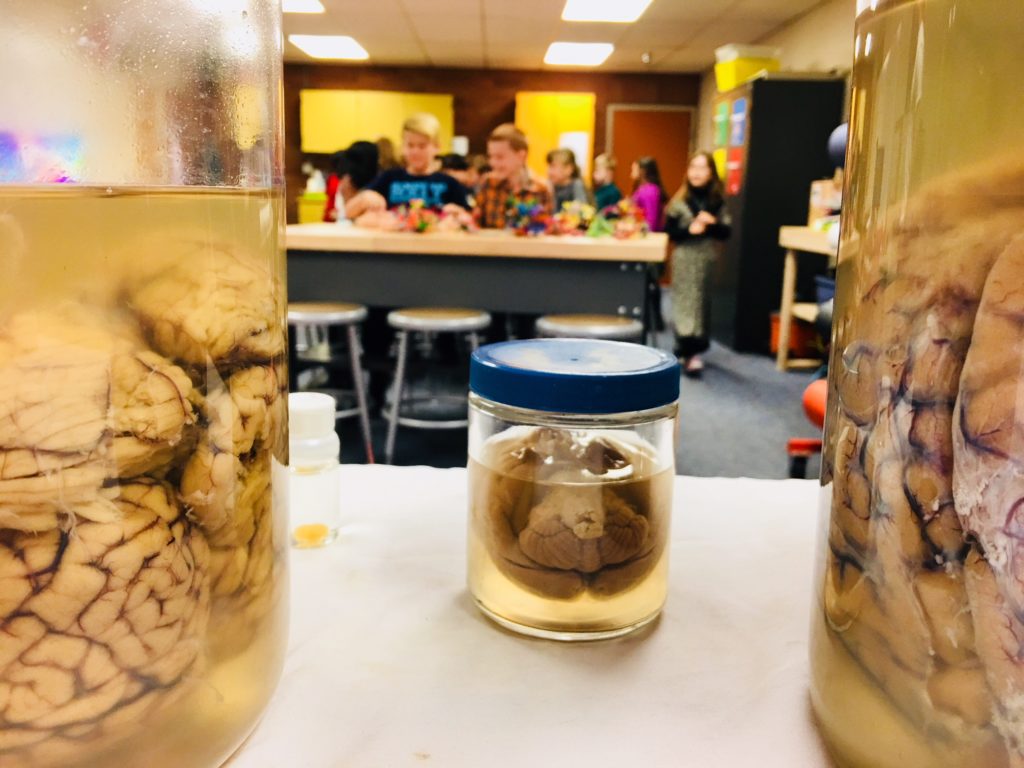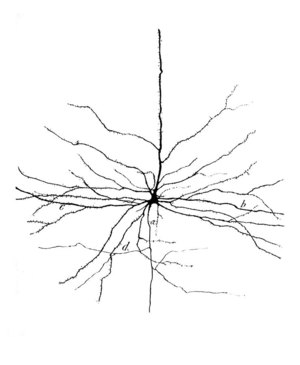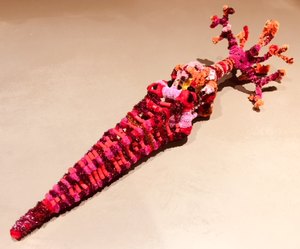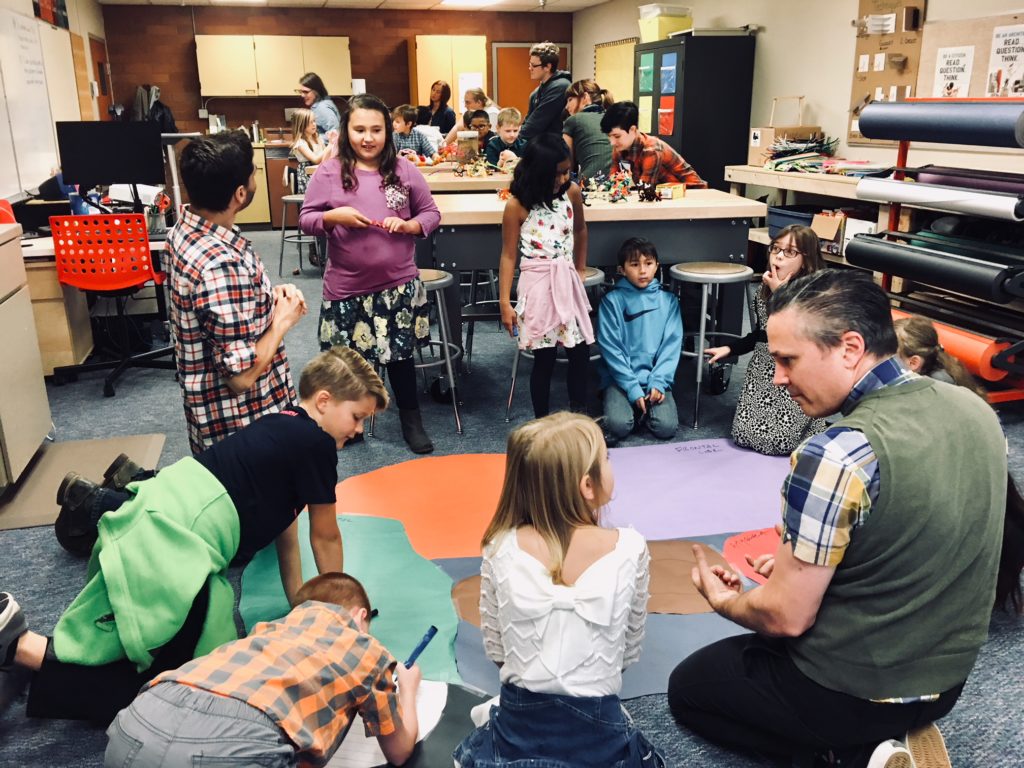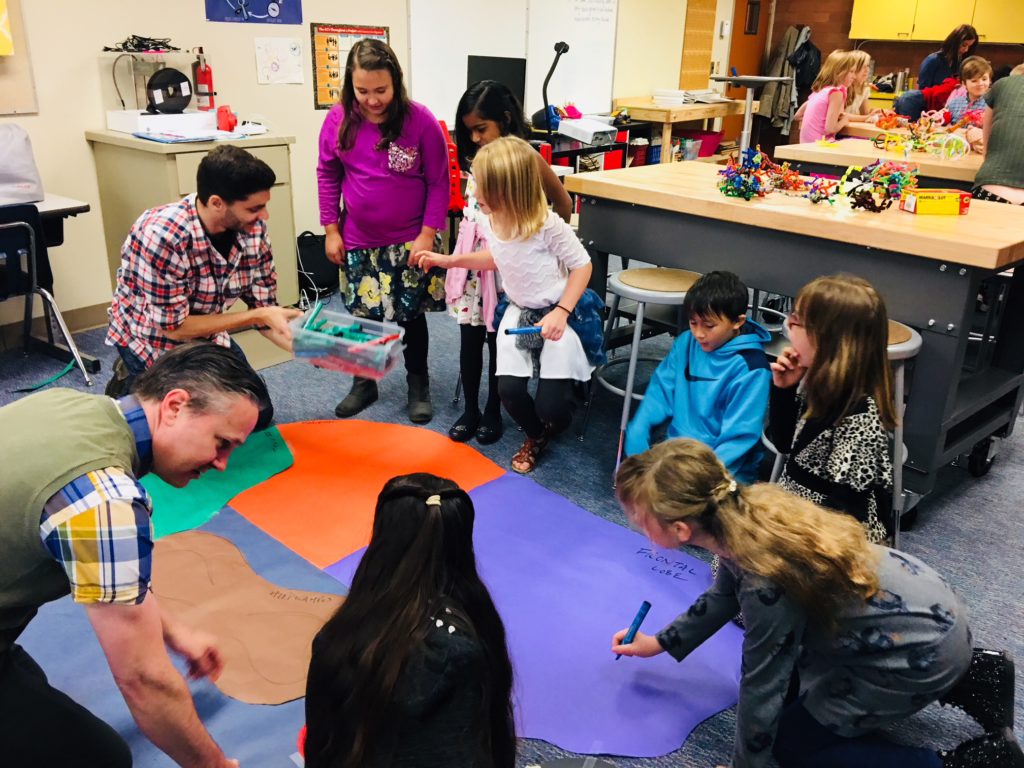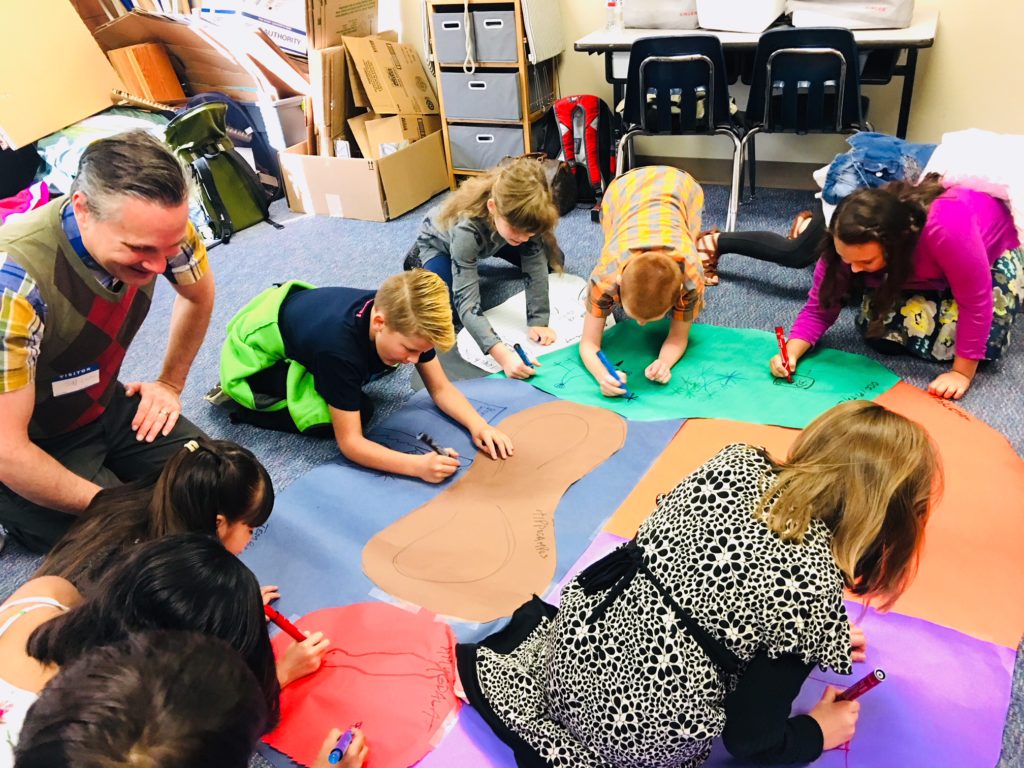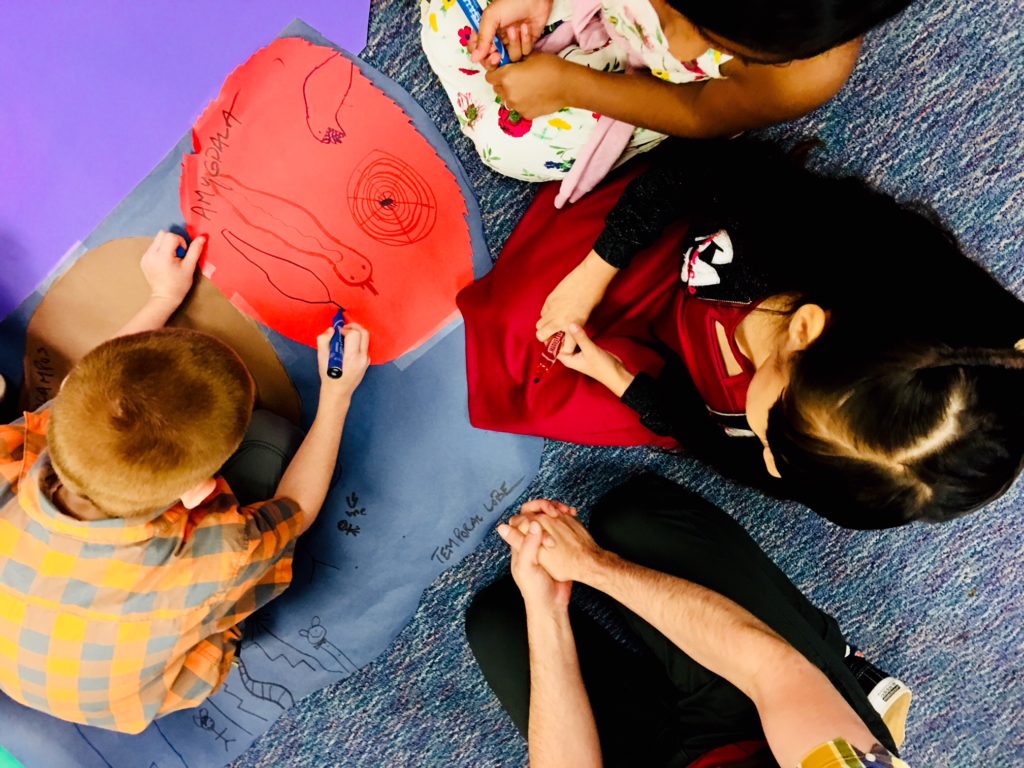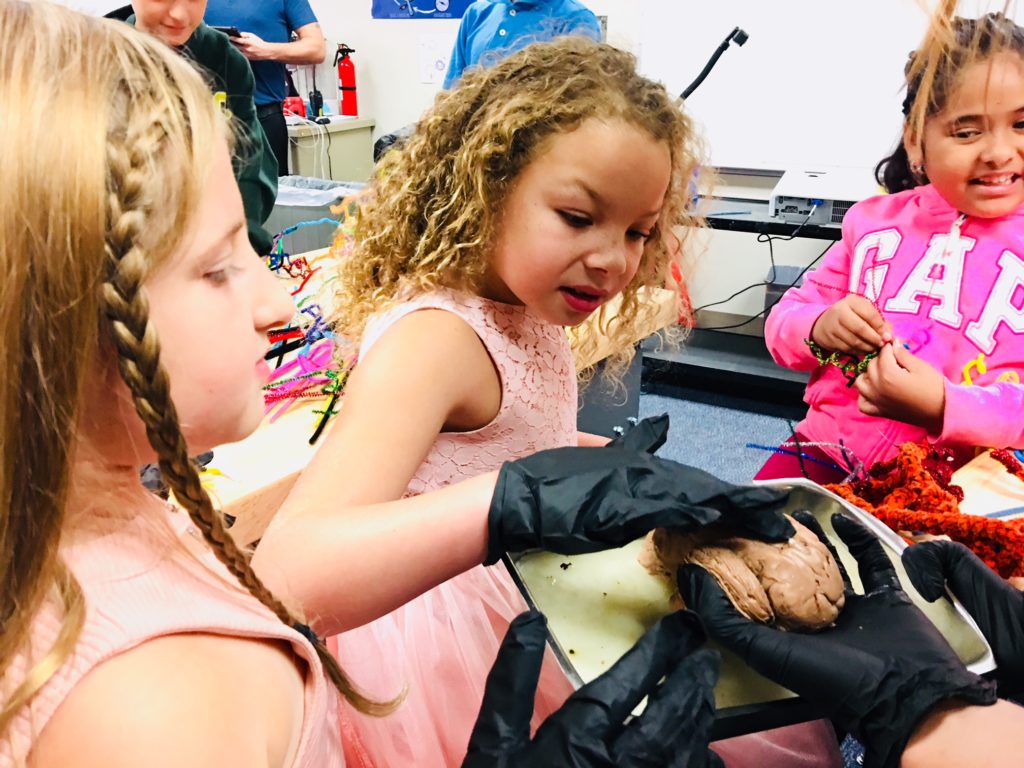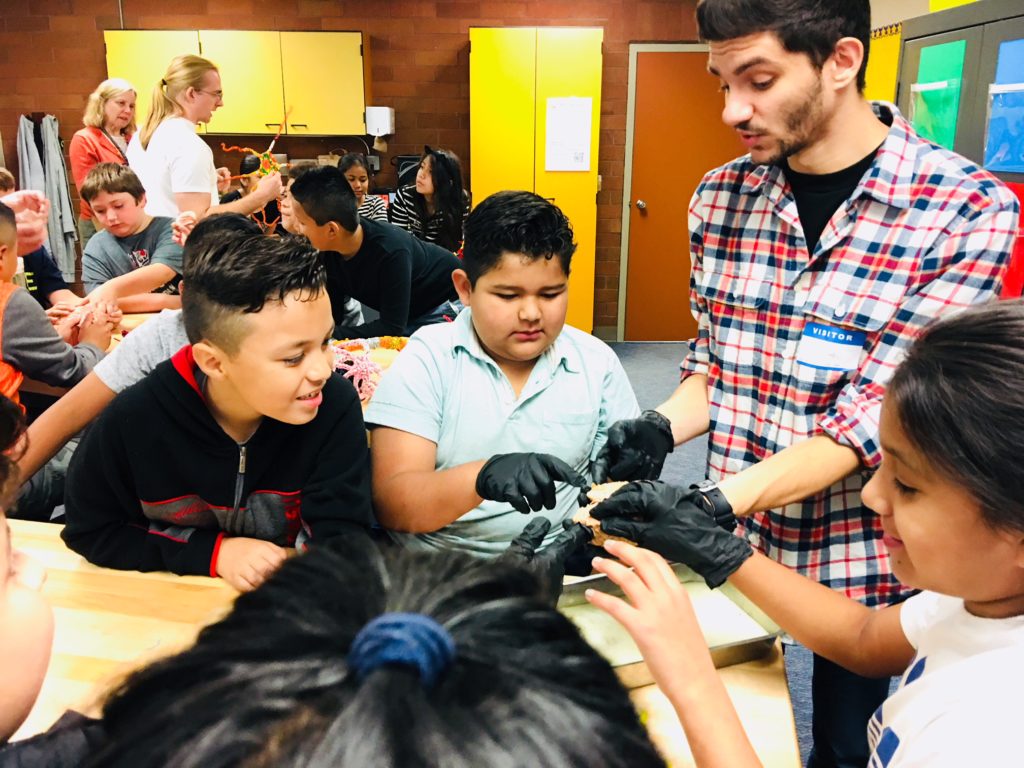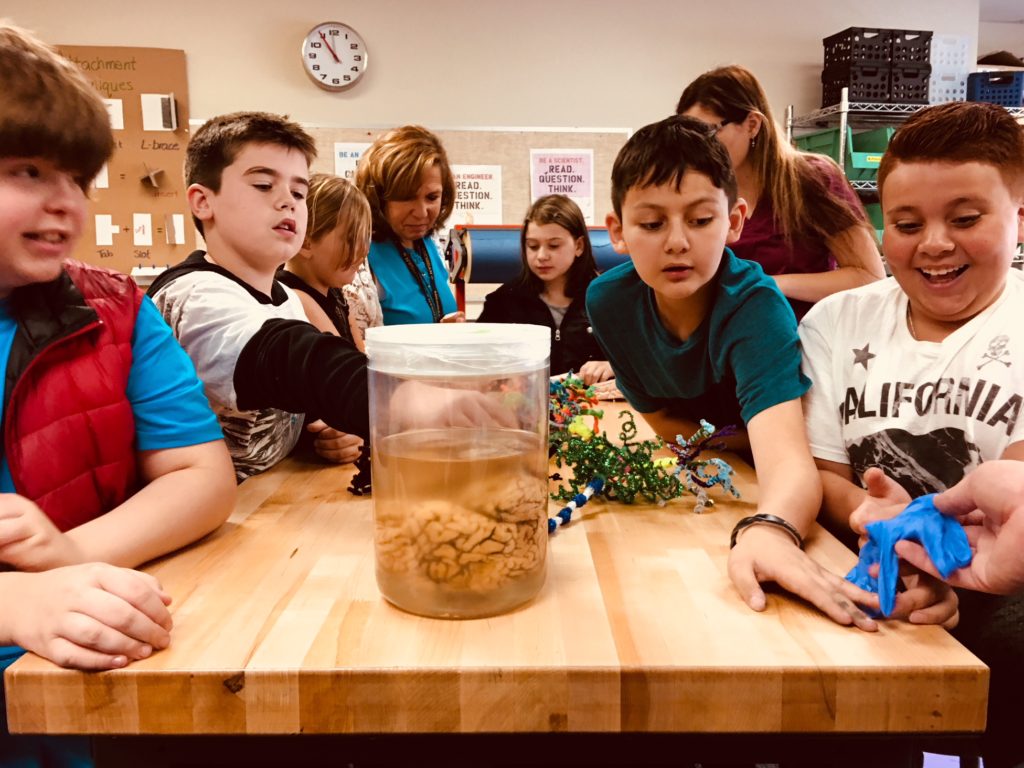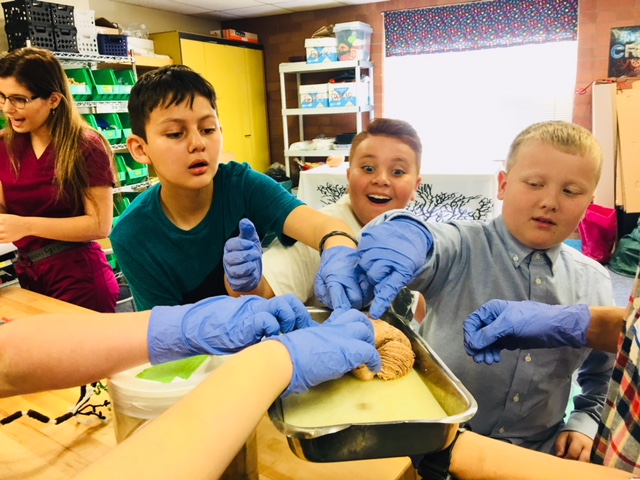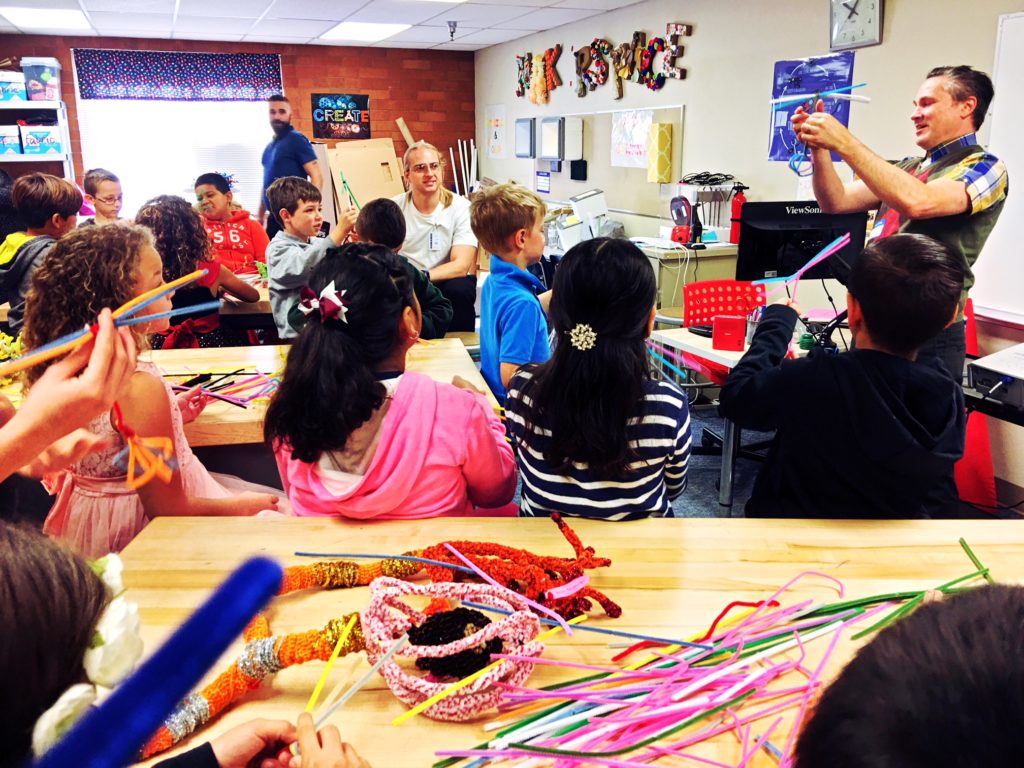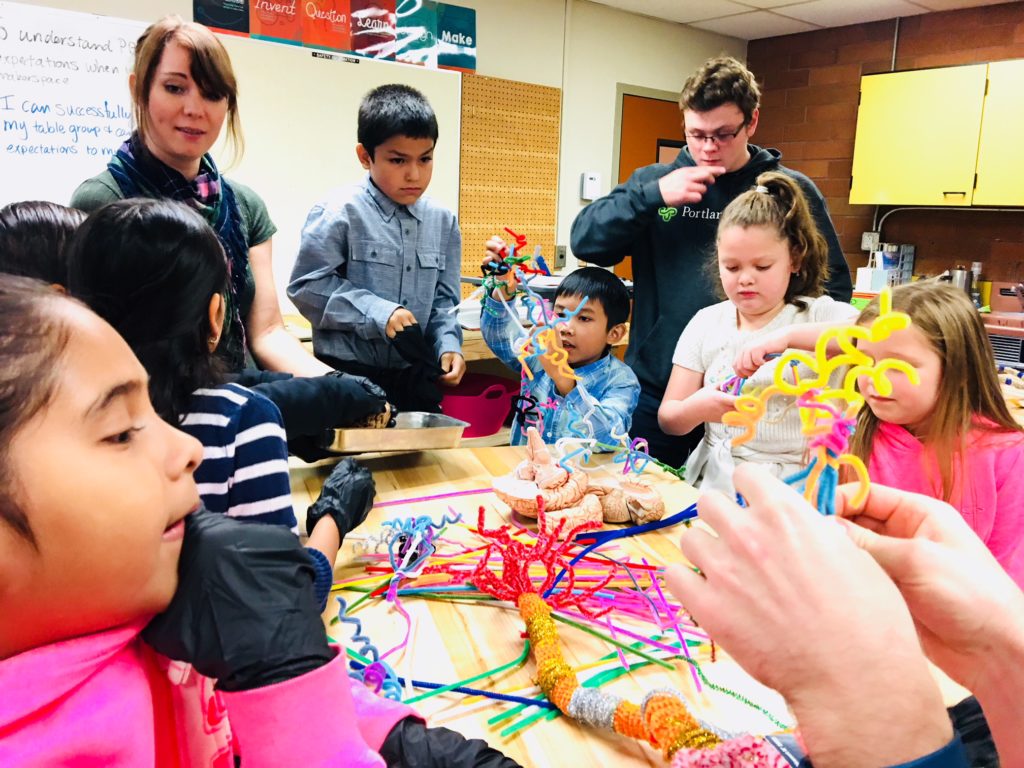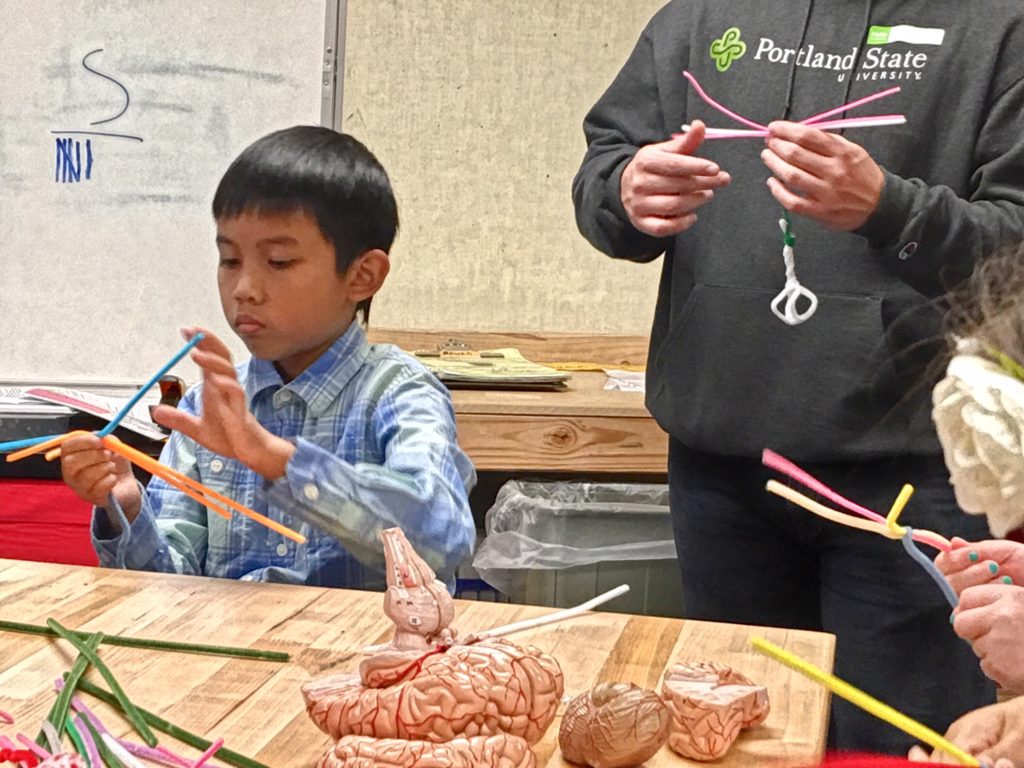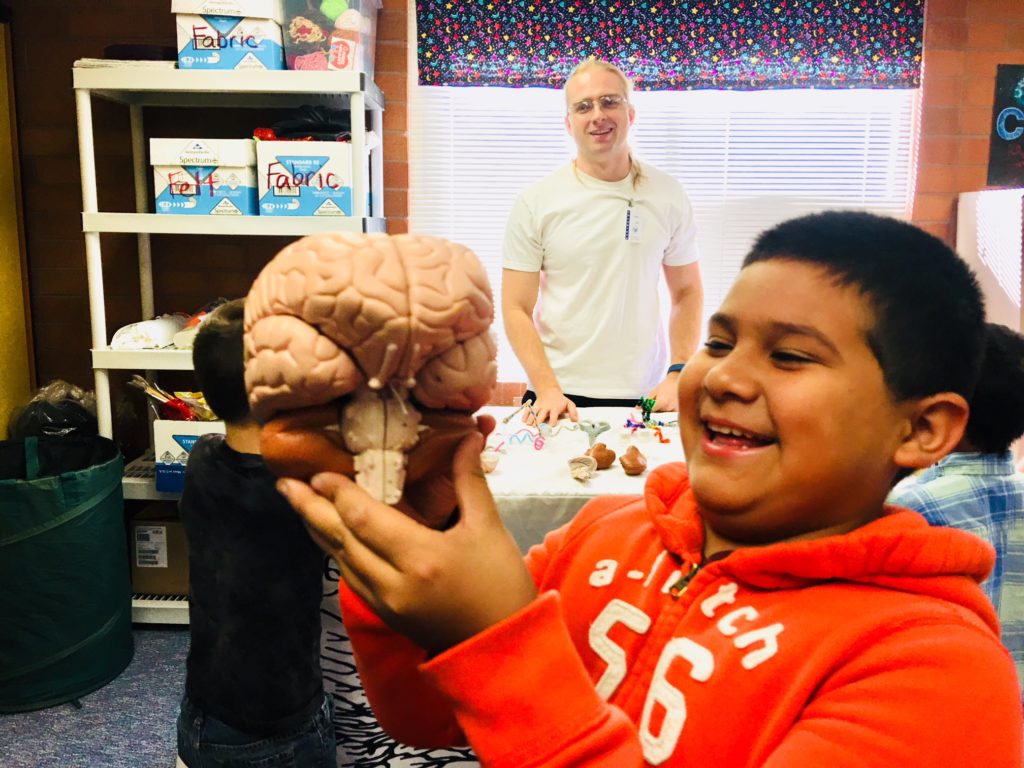We spent an especially energetic Tuesday engaging our visual systems – and additional brain lobes and networks – with seven consecutive classrooms of 3rd – 5th graders at Peter S. Ogden Elementary in Vancouver Public Schools..!
Our enthusiastic, high endurance volunteers included Jobe Ritchie, Alison Mack, Tyler Parr and Aliese Poole from Portland State University, Kateryna Bondarenko from WSU, Joey Seuferling from the Noggin Resource Council, and Denessa Oberbeck and Kim Engeln from OHSU…
We often find the history of school names fascinating, as brains are adept at pattern-seeking and compelled to tell tales. According to the teachers, Ogden was actually a violent and aggressive man who, after a murder, was banished to remote posts including Fort George and Fort Vancouver. Yet he rose to prominence as a fur trader and explorer, and a major city in Utah (Ogden) is named after him, too…
LEARN MORE: Peter Skene Ogden (1790-1854)
LEARN MORE: Ogden, Peter Skene (1790-1854)
LEARN MORE: Reformed after a violent past, Peter Skene Ogden led early expedition into lands that became Utah
The school serves just over 520 students, and they are extremely proud of their diversity. We arrived ready to speak about el cerebro (brain in Spanish), ខួរក្បាល (pronounced “khuorokbal” in Khmer), डिमाग (“dimaag” in Hindi), lub hlwb (Hmong), mozak (Bosnian), دماغ (“damagh” in Arabic) and мозг (“mozg” in Russian)…
After a brief stop to check in with (and surprise!) the school office…
…we headed to Ogden’s colorful “maker space,” complete with 3D printers, movable wood-topped tables, and rolls of colored paper that we used to quickly construct a brain!
We added the hippocampus (brown) and amygdala (red) to the dark blue temporal lobe, as students have been studying the MindUp curriculum, which presents K-8 kids with a few select regions of their developing brains that contribute to how we perceive, feel, remember and behave…
We introduced ourselves to the first class of 3rd graders, and explained what we did, what we studied, and what we wanted to be. These students love neuroscience! Their mozak’s and мозг’s were working overtime! We’d strewn their table tops with striking brain cells made of pipe cleaners, and kids asked us many insightful questions about why they looked so different, and what each one did…
“This one looks like a pyramid – that exploded!” We explained that this type of neuron is called a pyramidal cell for exactly that reason (well, the first part!), and noted that Spanish neuroanatomist and artist Ramon y Cajal had drawn these striking “butterflies of the soul” a century ago…
LEARN MORE: Life and Discoveries of Santiago Ramón y Cajal
Students also thought that neurons looked like gummy worms – and spaghetti!
The MindUp curriculum for early grades used at Ogden focuses on three specific brain regions as “helpers,” including the pre-frontal cortices (in those frontal lobes right behind your forehead), which “help (you) make smart choices.” A second brain area (called the amygdala) “helps protect (you) from danger,” while the third (your hippocampus) “saves memories and ABCs…”
LEARN MORE: MindUp
Our volunteers described these regions, and answered some compelling questions. One boy told us he had bad dreams, and asked if he could change his brain to stop making them. We acknowledged how real a nightmare feels, and how scary, but noted that dreams are created by brains. What we dream about isn’t actually happening at that time, though it can be terrifying nonetheless. We noted that people often dream about experiences and thoughts they have during the day, and if he could be distracted from recalling his dreams it’s possible they wouldn’t re-appear as often. Concern over bad dreams can be stressful, and interfere with sleep – and better sleep may also lessen the re-occurence of nightmares…
LEARN MORE: CHILDREN AND BEDTIME FEARS AND NIGHTMARES
LEARN MORE: Nightmares and anxiety in elementary-aged children: is there a relationship
LEARN MORE: The content of recurrent dreams in young adolescents
LEARN MORE: Nightmares: An Under-Diagnosed and Undertreated Condition?
In addition, during sleep, some emotionally significant areas of your brain – including the subcortical amygdala which warns you of danger, a part of the hippocampal region important for memory, and a midline section of your frontal lobe called the anterior cingulate – all become more active, while “executive” brain areas in your frontal lobes which help you make good choices and suppress fearful thoughts (including the dorsolateral prefrontal cortex, or DLPFC) quiet down…
According to noted sleep research Robert Stickgold, our dreams can therefore be “hyper-emotional and bizarre, with logical constraints removed,” and most of us lack control over the stories we tell in slumber.
LEARN MORE: Noggins in Nod: The science of sleep
A recent study also clarified the connection between early school start times, sleep disturbances and mental health outcomes for young people. Given what we know from research, school districts should definitely begin classes, particularly for high school, after 8:30am to support healthier brain development in adolescents.
LEARN MORE: Relationships between school start time, sleep duration, and adolescent behaviors
LEARN MORE: Sleep in Adolescents: The Perfect Storm
LEARN MORE: Adolescents’ sleep behaviors and perceptions of sleep
We then introduced additional brain regions, including the four lateral lobes of cortex…
The occipital lobes, for example, at the back of your brain receive most of the projections from sensory cells in our eyes known as photoreceptors, which absorb reflected light.
A red cone photoreceptor, in pipe cleaners
Yet information about what you’re viewing doesn’t remain in your occipital lobes, but is transmitted electrically along the wire-like extensions of brain cells, called axons, to additional lobes of the brain. The parietal lobes help us to map where our body physically is in space, and let us feel touch and navigate successfully around the crowded maker space at Ogden…
And the temporal lobes also receive wiry axonal projections from our visually engaged posterior occipital lobes, carrying information about what it is you’re actually seeing. Is that a car? A horse? A neuron? A gummy worm, strand of spaghetti – or an exploding pyramid?!
We then introduced our brain map project, asking students to think about what each cerebral area did, and how they might explain its function to others through pictures – drawn directly on the brain!
There were definitely a few nightmarish creatures added to the amygdala…
And all sorts of sports activities and other motor tasks drawn on the cerebellum…
We also examined some real humans brains – another consistently popular activity!
One teacher pointed out a student he said always slept through class. Today he was wide awake, excited, asking questions, making art and holding brains!
We had so many classes – seven! – that we alternated art projects, building quite a few pipe cleaner neurons as well. Many thanks to our partners at the Portland Alcohol Research Center (PARC) at OHSU for providing these supplies!
Several kids were particularly engaged by the art – and told us they wanted to become artists, too!
DISCOVER: Pipe Cleaner Neuron Project Background
CREATE: How to make a pipe cleaner neuron
WATCH: Making pipe cleaner neurons in the classroom
A busy classroom: STEAM learning in action with brains and art!
Tyler Parr, a new freshman volunteer from Psychology at PSU who would like to be a school psychologist had this to say about the experience: “I very much enjoyed how wide their eyes got when we brought the brains around. And some of the eagerness the kids had to touch the real human brain! Plus it was fun to convey what I knew about the brains. I loved the experience and I am very excited to do it again! It absolutely gave me a neon arrow to become a school psychologist…”
Many thanks to all our volunteers, and to enthusiastic Ogden teachers Ryan Bowen, Leeah Crawford, John Federovitch, Shannon Yount, Becky Hilfiker and Carol Patrick, and to Principal April Whipple for welcoming our brains to school!




